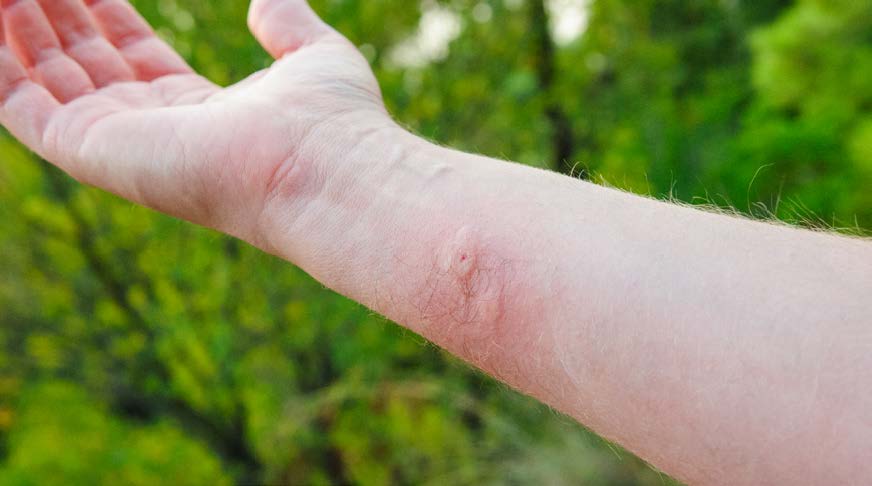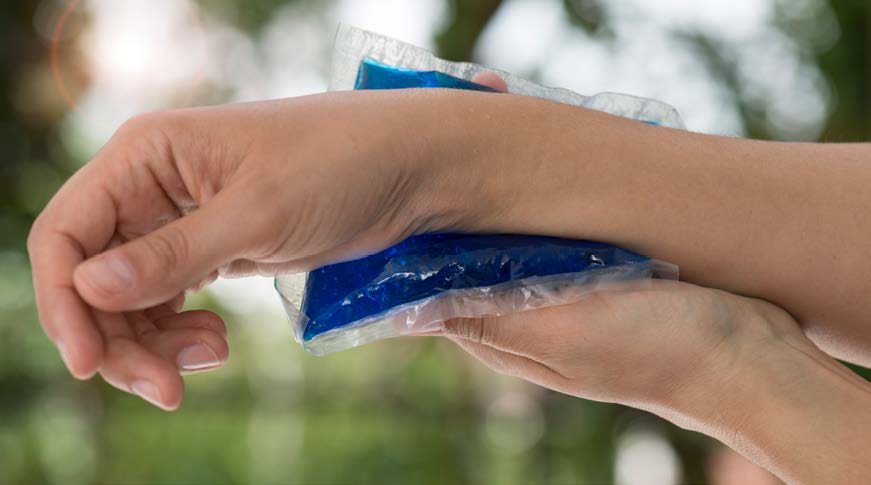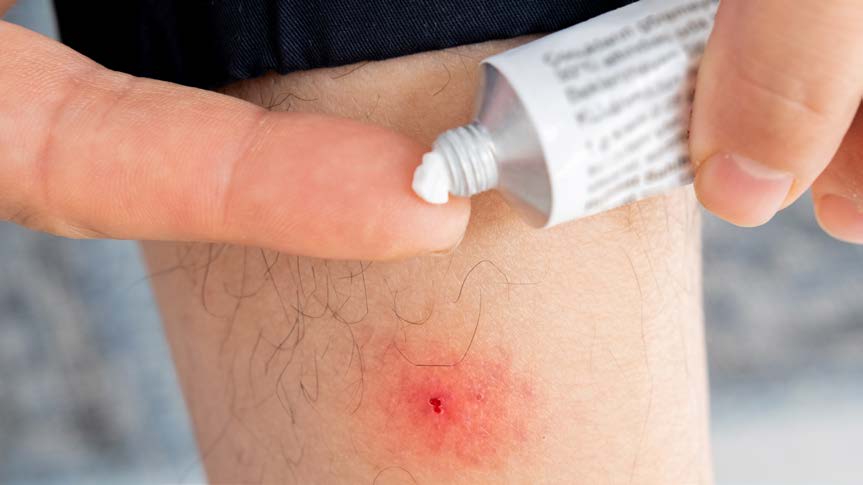First-aid Care: Bites + Stings
When insects bite or sting, a quick and informed response helps reduce pain, swelling, and risk of infection. Get clear steps for treating mild to moderate reactions and know when it’s time to seek medical care.
Outdoor work and warm-weather tasks increase the risk of insect bites and stings. Whether it’s a bee, spider, or unknown critter, fast first-aid action can make all the difference in preventing discomfort or serious complications. This guide walks you through how to treat bites and stings effectively using standard first-aid supplies so minor incidents stay that way.
Bees, wasps, insects, spiders, and other arachnids can bite or sting when you least expect it. Parts of the body that are not protected by clothing or footwear are the most common targets. When applying first aid, it helps to know what bit or stung you.
Signs + Symptoms
Signs and symptoms of a bite or sting vary from mild to severe. Venom may cause minor swelling, a welt, redness, pain, and itching. Signs of a serious allergic reaction may include coughing, trouble breathing, chest pain, profuse sweating, confusion, nausea, vomiting, and hives.
First Aid
Most bites and stings heal on their own. To help relieve symptoms:
- Wash the affected area with soap and water and wipe with rubbing alcohol or first-aid antiseptic to help prevent infection.
- For an inflamed insect bite or sting, apply a wrapped ice pack for 15-20 minutes per hour for the first six hours. When not using ice, keep a cool, wet cloth on the bite or sting for up to six hours. If swelling is not present, heat may be applied to the site for comfort.
- To help relieve pain and itching, use an over-the-counter antihistamine at non-prescription strength, a local anesthetic spray, hydrocortisone cream (1%), or calamine lotion. The remedy should not cause drowsiness.
- Do not break any blisters. If a bite becomes irritated, apply a non-prescription antibiotic ointment and cover it with a bandage.
- Get a medical evaluation for increased pain, swelling, redness, warmth, red streaks leading from the area, draining pus, or fever.



First-aid Supplies for Bites + Stings
WorkCare recommends keeping the following supplies on-hand in your first-aid kits:
- Sterile skin wipes
- Rubbing alcohol
- Ice packs
- Gauze
- Tweezers
- Non-prescription antibiotic ointment
- Non-prescription antihistamine medication or spray
- Hydrocortisone cream (1%)
- Calamine lotion
Note: For stings, remove a stinger by flicking it off or wiping gauze over it; do not squeeze or use tweezers. To remove an embedded tick, use a tweezer to pull it upward with steady, even pressure. Do not twist.
Let’s Work Together
Ready to take your workforce health and safety to the next level?
Contact us today to learn how WorkCare can partner with you to create a healthier, safer, and more productive workplace.
